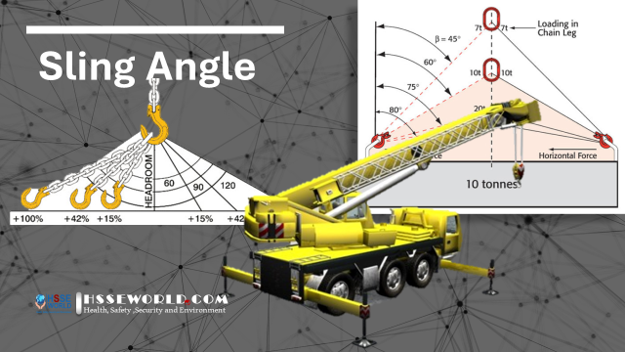A 2014 survey from The Workforce Institute at Kronos Inc. found that a significant number of adults in many countries think that improving safety is the number one factor that would make workers more likely to use wearable technology in the workplace. And it could benefit a variety of industries and occupations, from first responders to the construction, warehouse, and manufacturing sectors.
What Are Wearables and What Can They Do?
Wearables are items equipped with small electronic devices that capture data and give feedback about the wearer. They can be worn under, on top of, or attached to clothing – but more and more, they’re being integrated into the very structure of it.

The list of benefits of using wearables for workplace safety is long, and this list is certainly not exhaustive. We hope to highlight some of the key ways that wearable technology can make worksites across the country safer (see 6 Workplace Safety Technologies Every Company Should Know About for related reading).
Increases Worker Awareness of Safety Risks
Using wearable technology can heighten a worker’s awareness of the risks they face during common, everyday activities. Their devices could, for instance, alert them when toxins are present in the atmosphere, temperatures climb to dangerously high levels, noise levels require hearing protection, or heavy machinery is operating nearby.
Data shows that when people understand their habits better, they’re more likely to change their behavior. In this case, workers will notice when they are at risk and adapt their behavior to avoid putting themselves in potentially hazardous situations.
Reduces Ergonomic Hazards
Ergonomic hazards are a fact of life in everything from desk jobs to highly physical labor. Wearable sensors can alert the wearer when they are putting themselves at ergonomic risk. Sensors embedded in an employee’s work shirt could, for instance, register whether they are sitting with a proper posture or are using proper lifting techniques (learn more in Keys to sustainable safety and ergonomics).
Provides Managers with Data to Better Monitor Workflow and Identify Hazards
Wearables use the same kind of sensors as those found in smartphones and smartwatches to collect real-time data about the time and effort required for work tasks. This data is valuable for managers and supervisors, who can use it to better manage workflow and identify potential health and safety risks that should be proactively addressed.
Offers Learning Opportunities
While there is a lot to learn from accidents, reviewing near misses can be far more valuable when it comes to preventing future incidents. Wearable tech allows users, supervisors, or health and safety managers to review and interpret the data collected. Then, they can implement this learning to modify the work environment or tasks to mitigate risk (learn more about what is the difference between incidents and accidents).
Highlights Issues with Safety Reporting
Data collected from wearable tech can help employers see when supervisors or workers aren’t following through on safety initiatives. This can offer valuable insight into issues with safety reporting in the workplace, allowing employers to take action to address it.
3 Examples of Small Wearables with a Big Impact
1. Health-Tracking Vest
Researchers at the Royal Melbourne Institute of Technology (RMIT) developed a vest that can track the health of construction workers in real-time. This type of wearable is particularly useful in climates where heat-related illness is a major concern. They’ve also created wearable sensors specifically designed to detect UV radiation, which can help users prevent sunburns.
2. Proximity Sensors
GPS and proximity warning sensors are increasingly being integrated into safety vests and other types of PPE. They monitor the location of workers set off audible or visual warnings when a worker gets too close to dangerous machinery or a potentially hazardous location on the worksite. Given that about 10 percent of all construction fatalities are related to workers being struck by an object, this technology alone could revolutionize construction site safety.
3. Smart Hard Hats
Hard hats can be equipped with a clear visor that can display 3D visual overlays for the wearer, as well as a wireless camera that allows the worker to get a 360-degree view of his or her surroundings. This can function, in effect, as a rear-view mirror for pedestrians, reducing the risk of an accidental run-over.
Challenges for Employers
As with many new technologies, there are drawbacks and challenges that accompany the benefits. Often, the companies developing wearable technology have little experience in the field of workplace safety. So while their technology expertise is valuable, there may be some hiccups when it comes to actually apply it on the worksite.
Privacy is another huge concern. No matter what type of wearable you’re looking to use, employees will want to know where their data is going and what it will be used for. Employers should, therefore, have strong security measures to protect employee data and a strategy for communicating to workers that the main goal is improving safety, not punishing workers.
Then there’s a user error. Very few technologies are fool proof, and workers could become overly dependent on the wearable or use the device incorrectly. They might, for instance, walk through the construction site without paying attention to their surroundings, believing that the sensors in their safety vest will alert them to any nearby hazard. To avoid this, employers introducing wearables into their workforce should hold training sessions to teach workers how to use the devices and help them understand what their limitations are.
Conclusion
Wearable technology has the potential to completely change the way we approach safety on the worksite. From increasing awareness of risk to offering data that can help control hazards and improve efficiency, the benefits are numerous.
It’s time for every employer to evaluate their worksite and ask themselves, “How could wearable tech improve the safety of my workers?”




